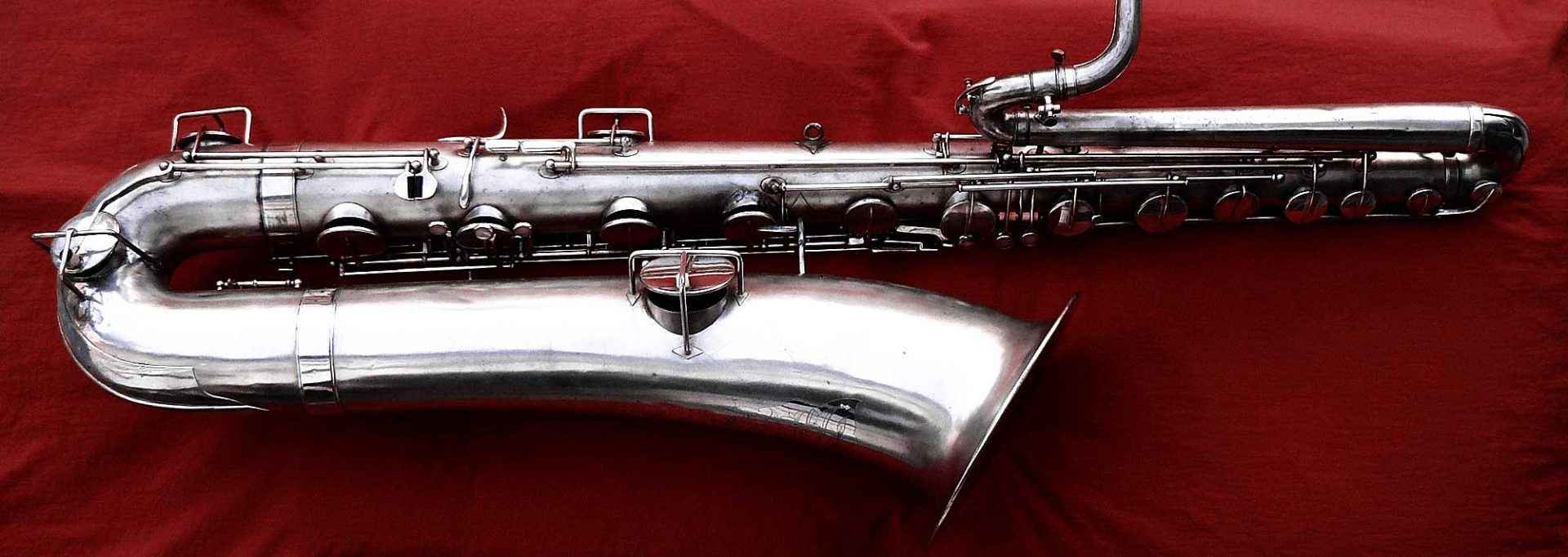Update June 2024: Check the following for a current website’s explanation of this acronym.
For more than 2 years now I have been researching and writing the histories of European, more specifically German, saxophones and their manufacturers. For the foundation of this research, I have been using the raw research data that German saxophone historian, writer, repair tech, and professional player, Uwe Ladwig provided to me.
While researching saxophones, I have also been delving further into the world of vintage, saxophone-shaped things. Many of these instruments and toys come from Germany as well.

While researching both vintage saxophones and saxophone-shaped toys and instruments, I have come across the acronym D.R.G.M. a number of times. Being the curious sort, I did some research in an effort to discover what it really meant. As it turns it, finding out the answer to this would, ironically enough, lead me from the German back to the English.
The acronym D.R.G.M. stands for Deutsches Reichsgebrauchsmuster. I have seen it spelled a number of other ways including: Deutsches Reich Gebrauchsmuster, Deutsches Reichs Gebrauchs Muster, Deutsches Reichs-Gebrauchsmuster, etc.
Despite all the research I’ve done on both German and English sites, there is no clear consensus on how it is spelled. However, more sites spell it Deutsches Reichsgebrauchsmuster than any other, so for now that’s what I’ll go with as well.
After looking at countless websites in both German and English, I found the most comprehensive explanation of what a Deutsches Reichsgebrauchsmuster is, on the Assisted Knife.com website. The following summary is based on the contents of that site. BTW, this information is in line with what I have found on German websites as well.
D.R.G.M., or sometimes DRGM, is not a German patent. It was instead a way for inventors to register a product’s design or function in all states within Germany.
From 1891 to 1952, products manufactured in Germany might have been stamped with this D.R.G.M. designation, if the manufacturer opted not to pay the outrageous patent fees that Germany was charging, but instead chose to copyright their product’s intended way of use, or design. This copyright was initially for a period of 3 years, with an option to extend it for another 3. This gave the copyright owner a maximum of 6 years protection.
A number of the sax-shaped toys I already have on my website have this D.R.G.M. designation, including the: Jazzophon, Distler tin whistle, and the Luxophon. Interestingly, D.R.G.M. protection was not limited to just toy saxophones, instrument manufacturers used this copyright protection as well.
G.H. Hüller saxophones are the ones most commonly noted as having a D.R.G.M. stamp. For example, here is a soprano, which appeared on the German eBay site late last year.
Source: adina.c
As already noted, German patents were outrageously expensive, and many manufacturers could not afford the fees to register a full patent (fees for German patents were 36 times more than American patent fees). Those that could afford a German patent, had their products stamped with D.R.P. or DRP, which stands for Deutsches Reichspatent. Such a patent granted the patent holder a full 15 years protection.
If the history of German copyright and patent information is of interest to you, I encourage you to check out Assited Knife.com’s D.R.P and D.R.G.M. page. There is a wealth of information there.





Hi everyone! I’m Luca and I’m from Italy. I’ve this old food trolley (pic). In the wheel there are DRGM initials. Could it have anything to do with this post? Thanks
Hi Luca.
Yes, the it is the same. The DRGM could be found on any kind of object, including old food trolleys apparently. 🙂